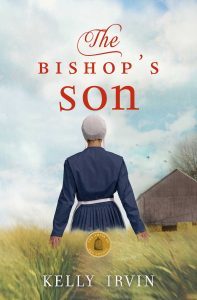James R. Callan's Blog, page 14
October 28, 2016
The Bolero
But first, the Paraprosdokian of the week —
If you can smile when things go wrong, you have someone in mind to blame.
Yesterday, I was about fifteen minutes from home when I turned on Sirius radio and was fortunate to hear the opening bars of Ravel’s Bolero. I immediately slowed down, not wanting to arrive before the dramatic finish of the piece.
Maurice Ravel wrote the piece at the request of the Russian actress and dancer Ida  Rubinstein. It premiered at the Paris Opera in November 1928—as a musical selection, with no dance—and, to Ravel’s surprise, was an immediate success. It was reported that he said, “I had written a piece lasting seventeen minutes and consisting wholly of ‘orchestral tissue without music’ — of one very long, gradual crescendo. There are no contrasts, and practically no invention except the plan and the manner of execution.”
Rubinstein. It premiered at the Paris Opera in November 1928—as a musical selection, with no dance—and, to Ravel’s surprise, was an immediate success. It was reported that he said, “I had written a piece lasting seventeen minutes and consisting wholly of ‘orchestral tissue without music’ — of one very long, gradual crescendo. There are no contrasts, and practically no invention except the plan and the manner of execution.”
But in spite of the composer’s downplay of the piece, it became his most famous work. When Conductor Arturo Toscanini conducted the US premier in 1929, it received shouts and cheers from the audience and a standing ovation.
There are some who say it is too repetitious, monotonous, and uninspired. They are missing the true genius of the Bolero. Ravel created two memorable themes, and then used them to create interest and tension. Yes, the main theme is repeated eighteen times, but with many different instruments picking up this theme with diverse orchestration. At one point, the first theme is played in one key while the second theme is being played in a different key. The piece starts out softly pianissimo and rises in a continuous crescendo to fortissimo possible (very loud). Ravel embellished the themes, altered the presentation, added drama, so that the Bolero leads the listener – propels the listener – to the powerful and dramatic conclusion.
The result is a piece that is dramatic, sensual, powerful. Memorable. Exciting.
While it was originally written for a dancer, it is rarely preformed to  accompany a dance. An exception to this is a group of young dancers in Puerto Vallarta, Mexico, the Xiutla Folkloric Dance Group. For its one thousandth performance, famous Spanish dancer Luis Montero was asked to choreograph a dance to The Bolero. He produced a dance that captures of drama and excitement of Ravel’s piece. The group has now preformed this dance many times and it never fails to bring the audience to its feet, cheering, clapping, and asking when the group will perform the dance again so they may attend.
accompany a dance. An exception to this is a group of young dancers in Puerto Vallarta, Mexico, the Xiutla Folkloric Dance Group. For its one thousandth performance, famous Spanish dancer Luis Montero was asked to choreograph a dance to The Bolero. He produced a dance that captures of drama and excitement of Ravel’s piece. The group has now preformed this dance many times and it never fails to bring the audience to its feet, cheering, clapping, and asking when the group will perform the dance again so they may attend.
I arrived home before the end of the piece, so I just sat in the car to hear the striking finish. I was not disappointed. That’s part of the power of music. You can hear a piece many times, but the repetition doesn’t diminish the pleasure, the excitement.
Ravel understood that.
If you have listened to the Bolero, give us your thoughts on the music. Thanks.
James R. Callan, 2016
October 21, 2016
Uber Good
But first, today’s paraprosdokian
I’m great at multi-tasking–I can waste time, be unproductive, and procrastinate all at once.
In September, Pittsburgh, PA became the first U.S. city to have driverless cars used to transport people from one place to another – a service provided by Uber. (Just one month earlier, nuTonomy offered such a service in Singapore.) Uber, is the world’s largest taxi company. Pittsburgh is significant because it is the home of Carnegie Mellon University, the leading university in robotics. Both the head of the Uber’s driverless auto endeavor and the head of Google’s division for driverless cars (considered the leader in the field) came from the CMU robotics department.
So, a customers in Pittsburgh can call Uber and order a driverless car to come to wherever they are and take them to any other place in the area. For the present, there will be a qualified, human driver sitting in the driver’s seat, ready to take control at any moment should the need arise. For the early part of this experiment, there will also be a second person in the front seat who will have a computer and will take notes on every aspect of the trip.
There is also a computer tablet in the back seat where the customer can offer any comments on the experience.
Initially, Uber will use modified Volvo XC90 sport-utilities outfitted with dozens of sensors, including cameras, lasers, radar, and GPS receivers. And while GPS is generally accurate to within ten feet, Uber systems strive for accuracy down to an inch.
Many experts in the autonomous car arena claim that self-driving cars  will ultimately save lives. For now, the efforts in this area are under close scrutiny. Last July, a driver using Tesla’s Autopilot service (not driverless, but driver assisted) was killed when the car collided with a tractor-trailer. The crash is still under investigation by the National Highway Traffic Safety Administration. Google has seen a few minor accidents. At present, Google limits its cars to a maximum of 25 miles per hour. Uber has not sustained any accidents since road testing in Pittsburg began in May.
will ultimately save lives. For now, the efforts in this area are under close scrutiny. Last July, a driver using Tesla’s Autopilot service (not driverless, but driver assisted) was killed when the car collided with a tractor-trailer. The crash is still under investigation by the National Highway Traffic Safety Administration. Google has seen a few minor accidents. At present, Google limits its cars to a maximum of 25 miles per hour. Uber has not sustained any accidents since road testing in Pittsburg began in May.
Uber is so committed to this endeavor it is acquiring Otto, a company working on driverless trucks And it has plans to open two additional R&D centers.
Ford is also working right now to produce cars that would meet Uber’s demands. In a talk several months ago, the head of General Motors predicted they would have completely autonomous cars in production by 2021.
Before too many years, you will be able to order a car to pick you up and drive you to your agent’s office while you put the finishing touches on your manuscript. The car will drop you at the door and go away. When you have signed the contract and are ready to leave, another call will bring a car to the building and take you home.
Last week, I wrote about our robotic vacuum – that actually works. Now, if they would only make a robot that will make the bed and clean the bathroom, we’d be set.
Life just gets better.
James Callan, October 2016
October 14, 2016
Artificial (not so) Intelligence
Artificial (not so) Intelligence
But first, today’s paraprosdokian seems appropriate.
Artificial intelligence is no match for natural stupidity.
I haven’t written much in the last couple of days. Why? I’ve been watching a vacuum cleaner. Now this may sound strange to you. Well … it is.
We bought a new robot vacuum. It has a laser to scan the room, memory to keep track of what part it has cleaned already, and the ability to go back and plug itself in when its battery need charging. Not only that, if it cannot clean the entire house on one charge of the battery, after it recharges its battery, it will go back and pick up where it left off and finish the job. You can schedule it to vacuum the floors every Tuesday, or twice a week, or every day if you are a clean freak, or room with Oscar of The Odd Couple..
How’s that sound?
However, …
How do we know if it really cleans every square foot? Our floor is not that dirty. We thought about sprinkling sand all over and then we could tell what got cleaned and what got missed. A sure-fire test. As it began, you could actually see the paths it made through the sand. On the practical side, we would have to stop it and empty its dirt bin pretty often. Yes, it tells us when its dirt bin need emptying. But, what if it didn’t do a good job? We would have all this sand on the floor. Cancel that method.
We have a house a little larger than average. And it takes the little robot five hours to complete the job. That means three trips out the gate with a full charge.
 It’s not quite as methodical or orderly as a person might be, although this model is not just a random go, bump, try a different direction approach. So say the ads and directions. At times, it looks like an organized random method. So, I am drawn to watch it and see what it is doing. Is it more methodical or more random? Does it cover all areas. (Remember, we decided not to put down the sand.)
It’s not quite as methodical or orderly as a person might be, although this model is not just a random go, bump, try a different direction approach. So say the ads and directions. At times, it looks like an organized random method. So, I am drawn to watch it and see what it is doing. Is it more methodical or more random? Does it cover all areas. (Remember, we decided not to put down the sand.)
At the end of its first battery life, it found its way back to the charge base, got there, turned around and snuggled its behind up to the charge contacts and settle down to be charged. This took about two hours – the charge, not the snuggling bit.
Once charged, it took off again to try to finish the job. I had spent some time having lunch and answering a few e-mails and was just starting to write when I heard it power up, ready to clean. I jumped up to see what it would do.
It had found its way back to where it had left off, and it started to clean. Shortly, it decided to clean under the bed. Now, I know we don’t do that very often. Okay, never. But the little robot decided to do a good job and once it finished, it stopped and displayed a message: “Please clean my dirt bin.” Well, it did say please.
Once the bin was emptied and replaced, the bot was on its way again.Except it didn’t know where to go next. It would turn in a complete circle, then stop and consider  (or whatever bots do). Then survey the room again, stop and consider. After several of these, it decided to go left. That was okay, for the bathroom was to the left. It spent ten minutes in the bathroom, then came back to where it had done its contemplating before. And did some more.
(or whatever bots do). Then survey the room again, stop and consider. After several of these, it decided to go left. That was okay, for the bathroom was to the left. It spent ten minutes in the bathroom, then came back to where it had done its contemplating before. And did some more.
You can see why I didn’t get any writing done. I tried talking to it on several (okay, many more than several) occasions. The day was beginning to fade and so was I. So, I paused it, and then instructed it to go back to its charging base. It took off like a shot, perhaps tired of our dirty floors.
It zoomed into the next room and stopped. Again, it displayed that bewilderment it had shown before. Survey 360 degrees, think (or whatever), spin around, cogitate, turn around and consider its options.
In fact, the base was no more than fifteen feet away, in plain view, an easy selection with a laser. Possibly the problem was, not once did I hear it say, “I think I can. I think I can.” And it didn’t.
So, if you’re thinking about buying one, I’d suggest you ask to see its resume or test scores. I’m going to reset everything and give it another chance tomorrow.
Writing suffers tomorrow.
James R. Callan, Oct. 2016
October 7, 2016
Naming Characters
Today, Bonnie Engstrom talks about how she goes about picking names for her characters. She has published two novels, several novellas, and is currently publishing a series of novellas with Forget Me Not Romances. Her latest is Connie’s Silver Shoes (The Candy Cane Girls) (Volume 4) which was published in July, 2016. Bonnie. and heer husband live in Arizona. Well, here I am, bamboozled into writing a blog. Seriously, not really bamboozled. But, Jim’s blog instructions did throw me for a loop, and not an ACFW loop comment. I have been blessed to be on several blogs, but in Q and A situations. Did I really agree to this? If I did, I hope I can live up to Jim’s expectations. Otherwise, why would he have invited me? Maybe Jim had brain fog?
for her characters. She has published two novels, several novellas, and is currently publishing a series of novellas with Forget Me Not Romances. Her latest is Connie’s Silver Shoes (The Candy Cane Girls) (Volume 4) which was published in July, 2016. Bonnie. and heer husband live in Arizona. Well, here I am, bamboozled into writing a blog. Seriously, not really bamboozled. But, Jim’s blog instructions did throw me for a loop, and not an ACFW loop comment. I have been blessed to be on several blogs, but in Q and A situations. Did I really agree to this? If I did, I hope I can live up to Jim’s expectations. Otherwise, why would he have invited me? Maybe Jim had brain fog?
There is one question most authors are asked immediately, me included.
* How do you chose names for your characters?
I wish I could say I research names that have meaning for each character’s personality.  Some authors keep lists, some check out baby book names, and some make diagrams. Me? My characters names simply pop into my head. Really. I only deliberately sought the “right” name for two characters – Betsy in Butterfly Dreams because the original title was to be a word play on the “Heavens to Betsy” expression (maybe I should have stuck with that title), and the second character? I knew the first story in The Candy Cane Girls series would be about a woman planning a Christmas wedding. So, I thought about Christmassy names. Of course Joy came to mind, but I wanted a more definitive name. Somehow, maybe an extension of my minimal background in French, I decided on Noelle Day. Get it? Christmas Day slightly disguised. Or, maybe it derived via buried memory since Betsy’s hero in Butterfly Dreams is named Noel. But, where I got his name is still a mystery.
Some authors keep lists, some check out baby book names, and some make diagrams. Me? My characters names simply pop into my head. Really. I only deliberately sought the “right” name for two characters – Betsy in Butterfly Dreams because the original title was to be a word play on the “Heavens to Betsy” expression (maybe I should have stuck with that title), and the second character? I knew the first story in The Candy Cane Girls series would be about a woman planning a Christmas wedding. So, I thought about Christmassy names. Of course Joy came to mind, but I wanted a more definitive name. Somehow, maybe an extension of my minimal background in French, I decided on Noelle Day. Get it? Christmas Day slightly disguised. Or, maybe it derived via buried memory since Betsy’s hero in Butterfly Dreams is named Noel. But, where I got his name is still a mystery.
I wish I had given more thought to the six, now seven, women’s names in The Candy Cane series. They all simply popped into my head. But, other than Noelle, they are names that end in “ie” or “y” sounds. I mean Cindy, Connie, Melanie, Natalie, and for true sound repetition, Candy. Why would I name a Candy Cane Candy? When I finally got to girl number six, I realized I had overdone it. That’s when Doreen’s name was born. But, I didn’t stop there. I introduced Emily as a minor character.
Some of the characters’ names are real names of real people. I love to use real people, especially ones I know personally. I always get a release from them, and so far all have been thrilled to be part of a story. Two have been men, male heroes;  several have been women and men as minor characters. Knowing them, and seeing their faces as I write, makes the story more authentic to me. One character who is in every Candy Cane story is Jill the wedding coordinator. Since I don’t use her full name, I haven’t asked for a release. But, she is definitely needed for each Candy Cane wedding. What would the brides, grooms and their families do without her? Especially, Jaeda in Connie’s Silver Shoes. Without Jill the ending of his and Connie’s wedding would have been very different. And certainly not as much fun.
several have been women and men as minor characters. Knowing them, and seeing their faces as I write, makes the story more authentic to me. One character who is in every Candy Cane story is Jill the wedding coordinator. Since I don’t use her full name, I haven’t asked for a release. But, she is definitely needed for each Candy Cane wedding. What would the brides, grooms and their families do without her? Especially, Jaeda in Connie’s Silver Shoes. Without Jill the ending of his and Connie’s wedding would have been very different. And certainly not as much fun.
I have my daughter in several books and two of my grown children and all six grandchildren in another. Someday they will have fun reading about their roles in a beach wedding.
I had prayed to be published before I became ancient. I think I have joined the ranks of ancient, but I’m having so much fun. I had always dreamed of writing a series, but I had never given any deep thought to how complicated it can be. All those characters with the same sounding names!
Bonnie’s email is: bengstrom@hotmail.com.
Her website is: www.bonnieengstrom.com where you can sign up for her quarterly newsletter Life on the Lake. 
September 30, 2016
The Reluctant Heroine
There’s been many pieces written on the amateur sleuth. Quite often, the amateur is pulled into the case and reluctantly takes it on. In my Crystal Moore Suspense Series, Crystal admits the most dangerous thing she ever did was say “no” to a man who never heard the word. And in that incident, she was pulled into the situation against her will. But, she had the will to extract herself, even if at a great cost. However, this is not the main thrust of the book. In fact, this is revealed only when she tells her sidekick about the incident two years later.
As unadventurous as Crystal sees herself, in both of the first two books it is Crystal who pushes herself into harm’s way. 
For the main plot line of A Ton of Gold, Crystal jumps into the fray. She gets in the middle of things when she believes someone is trying to kill her grandmother, her only remaining family and the woman who raised her.
My latest book is A Silver Medallion, June 2016. Here, Crystal decides to undertake a dangerous mission to rescue two young girls from a drug lord in the jungles of Mexico. Everyone tries to talk her out of it. Her grandmother, Eula, “who is tough enough to charge hell with a bucket of water”(description of Eula courtesy of a Caleb Pirtle review) tells her it’s a bad idea. Brandi, Crystal’s street-wise sidekick, says she can tell a dumb idea when she smells one. And Crystal’s boss, a former bull rider, tells her it is too dangerous. Lucita, the mother of the two girls is not certain she wants Crystal to go, afraid a mistake might mean harm for the children.
Even Crystal is reluctant. Several times, she convinces herself not to go. But her conscience keeps pulling her back. She is plagues with nightmares about the two young girls and their mother, slaves for the rest of their lives. She tries to think of some other approach. But the circumstances eliminate all of them. Finally, she is convinced if she ever wants to sleep again, or have a normal life, she must go and at least try.
Fortunately, she gets hooked up with mysterious Juan Grande. But if she is successful, she will have two ruthless and powerful men, one in Texas and one in Mexico, who now want her dead.
In A Silver Medallion, as with A Ton of Gold, Crystal enters into the dangerous situations willingly, yet fearfully. She has the unusual combination of reluctance and eagerness. It makes for an interesting and engaging character. She is the kind of character that adds to the joy of writing.
For less than a cup of coffee at Starbucks, or a Blizzard at the Dairy Queen, you can get a digital copy of A Silver Medallion. And as one reviewer on Amazon said, “Once I began reading it, putting it down became the challenge.”
Or from the BookLife Prize in Fiction, Critic’s Report: “reads like a gold-medal thriller from page one.”
A Silver Medallion on Kindle at: http://amzn.to/1WxoEaF
A Silver Medallion in paperback at: http://amzn.to/28LIdWs
September 23, 2016
Beam me up, Scotty
As I write this, it is the fiftieth anniversary of Star Trek being on television. So why is it that I still cannot beam myself to … wherever, maybe to visit one of my kids or grandkids?
In that epic series, Gene Roddenberry gave us everything we needed to accomplish the task. James T. Kirk and the rest of the crew of the USS Enterprise (NCC-1701) demonstrated the process each week – often more than once in a show.
This production gave us the chamber sometimes used, and even the command to make it work: “Beam me up, Scotty.” (In today’s spirit of full disclosure, Captain Kirk never said those exact words in the original series. But the spirit was there. He actually said, “Beam me up,” and “Scotty, beam us up.” And who can forget Captain Kirk giving the command, “Beam them out of there, Scotty.”)
But all of that aside, Roddenberry gave us the blueprint – and more – to develop a transporter, a beam machine, if you wish, that could move people from one place to another, more or less instantaneously. Having worked in research for many years, I can tell you that the most valuable part of the process is the idea. Those are golden.
In the case of Star Trek, we – that is, the scientific community – have been given not only the idea, but plans. Well, at least part of them. And most researchers will tell you that they don’t want to be given every last detail. If that were the case, what would they have to research? If all the work has been done and given to them, what are they supposed to do – just write up the experiment?
Fifty years. And the scientific community has not been able to reproduce, or create, the beam machine clearly outlined in 1966. And these episodes are still available. If today’s scientist needs to be refreshed, pull up as many episodes as needed to get the facts down. Of course, the members of today’s science community are too young to remember those wonder years when the Enterprise ruled the universe. Or at least that portion which could be filmed.
So, what’s the story? Are we spending too much time inventing child-proof caps for bottles? Or Velcro? (Actually, Velcro was invented well before Star Trek.) Probably the new generation of scientists will have to discover the idea for themselves. They will take credit and even give it a different name, maybe something like teleporting. Of course, Edward Mitchell, an American author, wrote about matter transmission in 1877. That was before my time, barely. But I remember The Fly, a 1957 story, and 1958 movie, which had a transporter, although it did not always reassemble things perfectly. But it moved them from one place to another. Fast.
 Scientists, get busy. Authors have pointed the way. All you have to do is build it. Simple engineering. As the security lines at the airports get longer and longer, there will certainly be a market for a teleporter. We’re ready to say, “Beam me home, Scotty.”
Scientists, get busy. Authors have pointed the way. All you have to do is build it. Simple engineering. As the security lines at the airports get longer and longer, there will certainly be a market for a teleporter. We’re ready to say, “Beam me home, Scotty.”
James R. Callan
A Silver Medallion, A Crystal Moore Suspense, Book #2
September 16, 2016
Cowboys Saved Her Career
Today’s guest is Shannon Taylor Vannatter, a stay-at-home mom and a pastor’s wife. She also happens to be a traditionally published, award-winning author with series books in more than one genre. She says it took her nine years to get traditionally published, but once she was, she has been prolific. Shannon is in the middle of a blog tour for her latest book and at the end of this blog you’ll find the details on her TEN book giveaway. Be sure to leave a comment.
and a pastor’s wife. She also happens to be a traditionally published, award-winning author with series books in more than one genre. She says it took her nine years to get traditionally published, but once she was, she has been prolific. Shannon is in the middle of a blog tour for her latest book and at the end of this blog you’ll find the details on her TEN book giveaway. Be sure to leave a comment.
How I Ended up Writing Cowboy Romance
If any readers have read my Arkansas books, they probably wonder about them since they’re different from what I write now. I initially wrote the first book set in a fictional Arkansas small town. After several rejections, I set it aside and wrote three unrelated books all set in Arkansas.
During that time, we took our son to the Arkansas State Fair. Strolling along with my family gorging on greasy, yummy fair food, I noticed a couple. He dripped cowboy—Stetson, pearl buttoned shirt, Wranglers, and Justins. She wore a pin-striped business suit with suede high heel boots. They were holding hands, laughing, and talking. And I wondered how they met, what they had in common.
Of course it became a short story about an ad-exec who’s afraid of bulls watching the cowboy she loves ride one in the rodeo. It won a few local awards. But the rejections kept coming. None of the writers groups I’d joined knew anything about Christian Romance. I searched online and discovered American Christian Fiction Writers. In 2005, I attended my first national conference.
A few years later, I learned two publishers wanted romances set in real small towns with local flavor. I opened the atlas, scanned towns, and found Romance. Thirty miles from my home, people go there to get married and the post office participates in the re-mailing program. Year round, manila envelopes full of wedding invitations arrive and around February fourteenth, Valentine’s cards come in droves to be re-mailed from Romance.
I couldn’t resist the perfect place to set a series of Christian Romance novels. I reworked my long ago book and set it in Romance. That year, I went to ACFW and ended up getting a contract for three books. But with each book, the sales numbers dropped.
I never started writing for the money—though I’ll admit—I did think there would be more than there is. I write because I love it. I love making characters do what I want them to. It’s like playing Barbies on paper. And I really love making my characters turn or return to Jesus. But I knew to stay published, I needed sales.
I happened upon an article that claimed if Texas is in the title or there’s a cowboy on the cover, romances sell better. I didn’t know much about cowboys, but I knew a little about the rodeo since my dad used to announce at our small town arena. I really didn’t set out to write a cowboy book, didn’t think much else about it. But fresh out of ideas, with my editor expecting another series, I dusted off that old short story and expanded it to book length.
Another three book contract later, I realized the cowboy on the cover and Texas setting didn’t help. Heartsong Presents seemed to be dying and by the time I turned in book 2, I got an e-mail that the imprint would end. Months later, Harlequin bought Heartsong, fulfilled the remaining contracts, and I ended up getting a new contract for three more rodeo titles. When I finished that set, I had three dangling characters and got another contract for six more books. The first three were rodeo, but the others were negotiable.
Meanwhile, my Arkansas readers wanted more Natural State settings. After six rodeo books, it was second nature for me to write drawling Texas cowboys. I wanted to satisfy my home state and came up with three more Arkansas books. But history repeated itself and Harlequin closed the line.
Days later, my wonderful agent talked with a Love Inspired editor familiar with me. My cowboys got me in the door. All I needed to do was deliver four proposals geared toward Love Inspired. I mentioned setting them in Arkansas, but my agent felt I’d created a niche with cowboys and said Love Inspired readers love them. I Texas-cowboyed up my proposals and was blessed with the opportunity to finish my contract with LI.
In the end, that long ago article and the trip to the state fair panned out. Cowboys saved my career. I hate to disappoint my Arkansas readers, but I think I’ll keep ’em.
The Cowboy Next Door 
A charming cowboy moving in next door shouldn’t be bad news. But veterinarian Ally Curtis knows Cody Warren—she’d never forget the boy who left her when she needed him most. Cody is doing everything he can to show his beautiful neighbor he’s not the wild bull rider he once was, from helping her find homes for her beloved strays, to protecting her when her business is threatened. But Cody has a secret that keeps him from fully reaching out. Yet as they continue to work together to promote her shelter, he can’t keep himself from hoping that Ally might have a home for him…in her heart.
Shannon will draw names from those who comment on the tour and give away 10 copies of Reuniting with the Cowboy plus a Noah’s Ark themed memory board personally crafted by the author. So, please leave a comment, even a very brief one. Thanks.
Shannon’s website is: http://shannonvannatter.com
Here blog is at: http://shannonvannatter.com/blog
And you can find her books on Amazon
September 9, 2016
The Joy of Historical Fiction
Today’s guest is Tamera Lynn Kraft. She writes historical fiction  set in the United States because, she says, there are so many stories in American history. She has received a second place in the NOCW contest and a third place in the TARA Writer’s contest. She is a finalist in the Frasier Writing Contest. Here’s what she has to say about research for historicas.
set in the United States because, she says, there are so many stories in American history. She has received a second place in the NOCW contest and a third place in the TARA Writer’s contest. She is a finalist in the Frasier Writing Contest. Here’s what she has to say about research for historicas.
Researching Historicals
Researching historicals is a lot of fun for those of us fortunate enough to write them, but they can also be challenging. The key is to make the history around the event a major part of the story without making the reader feel like she’s getting a history lesson. One of the greatest things writers can do is to immerse themselves in the time period they’re writing about.
Culture: Every era in history has a culture that is unique for that time  period. For instance, a novella I wrote called Resurrection of Hope is set in rural America in 1919-1920. During that time period, modern conveniences were starting to make their way into the average household, but many rural farms still didn’t have running water or electricity. Silent movies and roller skating rinks were where most people went for entertainment. Fashion was all over the place. Older women wore dresses to their ankle and their long hair in buns. Young city women called flappers wore their skirts almost to their knees, cut their hair, and sometimes even wore make-up. Many of the women in that time were somewhere in between. It was a time of transition into a new modern era, but it wasn’t quite there.
period. For instance, a novella I wrote called Resurrection of Hope is set in rural America in 1919-1920. During that time period, modern conveniences were starting to make their way into the average household, but many rural farms still didn’t have running water or electricity. Silent movies and roller skating rinks were where most people went for entertainment. Fashion was all over the place. Older women wore dresses to their ankle and their long hair in buns. Young city women called flappers wore their skirts almost to their knees, cut their hair, and sometimes even wore make-up. Many of the women in that time were somewhere in between. It was a time of transition into a new modern era, but it wasn’t quite there.
Historical Events: The events that were going on during the time period you are writing about need to influence the characters in your story just as they did in that day. For instance, a story written during the post-World War 1 era would not be as effective and believable if it didn’t have at least a mention of the great influenza pandemic of 1918-1919. Over 24 million people, some say as high as 50 million, died from the flu during that two-year period. It killed more people than the Great War, and every family was affected.
If you’re writing a story set in the late 1860s or 1870s, you’ll need to include the Civil War in your story. Remember that even though the war was over, every family was affected by it in some way. It was still fresh in their memories and needs to be addressed. Whatever era you are writing in, brainstorm about the historical events that affected everyday life.
Mindsets: Too many writers make the mistake of giving their characters a twenty-first century mindset. This is one of the easiest ways to make your characters unbelievable and to take the reader out of the era your story is about. That doesn’t mean you can’t have a career woman in the 1800s or a pacifist during World War 2, but if you have characters who defy the normal mores of that day, they need to have a reason for doing so.
I once wrote a novel set during the Civil War that had a female journalist who believed in women’s rights. I could get away with this because my main character was raised by a suffragette and graduated Oberlin College, the only coed college in the US before the Civil War that allowed both blacks and women to get college degrees and champion civil rights for both. Most of my other characters in this novel were surprised or hostile about her choice to be a career woman. It worked because even with my main character’s strong opinions, she still behaved, dressed, and had the morals of a nineteenth century woman.
One way to get into the mindsets of the people in the era you are writing about is to read journals, newspaper articles, and magazine of the time. That will help you understand their frame of reference. What we consider outdated and antiquated thinking was what was to them reasonable and sensible for that day. Don’t explain away their modes of thinking and behavior. Write the characters as they were in that era, and let the reader take away what she will from it.
 Here is the book blurb for her novel Resurrection of Hope.
Here is the book blurb for her novel Resurrection of Hope.
She thought he was her knight in shining armor, but will a marriage of convenience prove her wrong?
After Vivian’s fiancé dies in the Great War, she thinks her life is over. But Henry, her fiancé’s best friend, comes to the rescue offering a marriage of convenience. He claims he promised his friend he would take care of her. She grows to love him, but she knows it will never work because he never shows any love for her.
Henry adores Vivian and has pledged to take care of her, but he won’t risk their friendship by letting her know. She’s still in love with the man who died in the Great War. He won’t risk heartache by revealing his true emotions.
You can find her books on Amazon as well as Barnes and Noble, Desert Breeze Publishing, and All Romance eBooks.
You can contact Tamera on her website at http://tameralynnkraft.net or
Facebook: http://facebook.com/tameralynnkraft
Twitter: http://twitter.com/tamerakraft
September 2, 2016
Cell Phones Come in Handy
Joyce Ann Brown has been a librarian, a landlady, a story teller, and n ow a writer. She loves her family, her cats, and her walking trails. And she writes about cats and landladies, so she knows what she’s talking about. But today, it’s cell phones that get her attention, not the cats. Leave a comment and be entered in a drawing for a copy of Joyce’s latest cat and the landlady mystery. They are fun.
ow a writer. She loves her family, her cats, and her walking trails. And she writes about cats and landladies, so she knows what she’s talking about. But today, it’s cell phones that get her attention, not the cats. Leave a comment and be entered in a drawing for a copy of Joyce’s latest cat and the landlady mystery. They are fun.
Do you sometimes resent the amount of time you give to messages and social media on your cell phone? As a writer, I need to spend time staying in touch with my readers, which I love, but with that comes scrolling through personal Facebook posts from folks I hardly know (friends of friends?), Twitter posts from every site I ever followed, group e-mail messages meant for other people in my writing groups, posts to update my author blog, and so on. Whew. There’s hardly time to write by the time I finish.
Recently, my husband and I took a trip to Mexico and paid to have cell phone coverage while we visited. It made us think of a near disaster that happened years ago before cell phones were a choice. Here’s what happened:
Evian—No Gas: A Cautionary Tale
Only four people stood on the platform outside my train window, and none of them was my husband. I set aside my paperback and glanced at my watch—10:22 a.m. The train would leave at 10:24 a.m. It was well known German trains ran on schedule, to the minute. I scooted to the aisle seat and leaned out to look from one end of the passenger car to the other, studied my watch one more time, and then shrugged.
Meanwhile, as he related later, Matthew was boarding. He held a bottle of Evian spring water ahead of him, like an offering, ready to transfer it into my grateful hand. He knew I’d take it with a casual thank you, but he smiled to himself as he planned how he’d tell me during our trip from Munich to Salzburg how he had to go to the farthest refreshment stand to find “Evian—no gas” per my request. Like there’s even such a thing as Sparkling Evian. It turned out that the Germans stocked more carbonated than un-carbonated water in their train stations. Nevertheless, he had found the Evian at last and made it back to the train with two minutes to spare.
Matt passed the conductor on his way into the train, and the uniformed man climbed in behind him. That felt odd. The train jerked into motion as he opened the door to the coach. He looked again at his watch. Leaving two minutes early?!
Bubbles of doubt popped into his head. He stopped and stared. He had entered a storage coach. Bicycles hung on each side of the aisle. We hadn’t walked through storage on our train. Seconds clicked by as he passed through to the next car. More storage. He started to panic. Was this the wrong train?
Matt bent to find a view between two bicycles and waited until the train passed a track marker. More seconds ticked by. Track 4!? He needed track 6.
Thoughts gushed into his head. Jump off the moving train? No. Find the conductor? He looked from one end of the car to the other and bent to look through the window again. The train station was receding into the distance.
While this was happening, I slid back into the window seat and opened my paperback. Another glance through the glass told me Matt hadn’t appeared on the Track Six platform. Oh, well, I thought, maybe he got on the wrong coach and is making his way through the train right now. Matt knows enough to leave a long queue at a food stand if the time gets short. He’ll be here.
My attention returned to my book, Salt: A World History. I fell into deep concentration on the interpretation of historical concepts the book presented. Salt. It made me feel—thirsty.
Meanwhile, Matt considered only one option—he had to get off that train and back to ours. Red cords hanging beside the windows caught his eye. Emergency cords. He reached between the two bicycles closest to the exit and pulled the cord. Breaking wheels screeched, and the train shuddered as friction brought it toward a stop. But the exit doors were still closed.
Matt stood stymied for a couple more seconds before he spotted the red button. He pushed it. Whoosh. Matt bolted through the exit with the train still in motion, jumped off the top step, ran across the tracks, and sprinted back toward the station platforms without looking back. Panting, he zipped up the steps he found at the end of Platform Six. One second more and he found a gaping coach entrance with a conductor ready to close the doors.
Matt cast his eyes skyward—I made it! A jerk and a tremble told him the train was pulling out while he made his way from car to car, grabbing the backs of seats.
As my husband walked down the aisle, my thought-provoking volume vibrated, and I turned to the window with a start. Our train was pulling away from the station.
Mat approached me from behind. When he plopped into his own seat, I spun toward him. He held out the bottle of water, still in his hand.
“Here’s your Evian—no gas.”
“Thanks.” I popped open the top and took a swig. “I almost started thinking you weren’t going to make it back in time,” I said, and offered him a drink of the Evian.
Matt drank and then wriggled into a comfortable position in his seat. He took his time telling his story. In fact, he’s still telling it years later.
Back then, we would have had no way to contact each other had we ended up in different European cities. Now, we carry cell phones that work where we’re visiting. We still both take a book or two, of course.
 Aside from all those Twitter chirps, I think cell phones serve us well. In the newest addition to my Psycho Cat and the Landlady Mystery series, Nine Lifelines, phone calls and video chats are important part of the plot. I will give a copy of the book to one person who comments on this blog post.
Aside from all those Twitter chirps, I think cell phones serve us well. In the newest addition to my Psycho Cat and the Landlady Mystery series, Nine Lifelines, phone calls and video chats are important part of the plot. I will give a copy of the book to one person who comments on this blog post.
JIM: It’s another murder mystery and the cat does influence the sleuthing landlady. You’ll enjoy it.
August 26, 2016
Beauty in the Eyes of the Beholder
We pleased to have Kelly Irvin blogging for us today. Kelly has  been a non-fiction writer for thirty years. But, she also has three Amish series. The first book in the Amish of Bee County series (Zondervan/HarperCollins ), The Beekeeper’s Son, received a starred review from Publisher’s Weekly, calling it “a delicately woven masterpiece.”
been a non-fiction writer for thirty years. But, she also has three Amish series. The first book in the Amish of Bee County series (Zondervan/HarperCollins ), The Beekeeper’s Son, received a starred review from Publisher’s Weekly, calling it “a delicately woven masterpiece.”
Beauty in the Eyes of the Beholder: A trip to South Texas
When people think about the Amish, they usually draw on images they’ve seen in the media of pristine white houses with big barns and beautiful flower gardens amid green, lush fields. It’s an idyllic existence if photos are really worth a thousand words. That’s why I was so shocked and surprised when I decided to visit Bee County, Texas, the home of Texas’ only Amish District, and found something completely the opposite.
I planned to write a series based on this tiny community so it seemed firsthand research was in order. Bee County is about a two-hour drive south of San Antonio, where I live. The Amish community isn’t easy to find unless you know what you’re looking for. You pass a sign that says fresh eggs for sale, an old, rural cemetery, and turn onto Tynan Road at a sign that announces honey for sale. You know you’ve arrived when you see the Combination Store on the right with a broken down, old buggy in front and a junkyard of old buggy parts adjacent to the faded, rusty building.
All the buildings in this community of about 12 families have a similar appearance. I pulled in, turned off the ignition, and sat there contemplating. Was there a statement being made in the lack of fresh paint? Was it poverty? It certainly couldn’t be laziness, given the Amish’s propensity for hard work. I spent some time in the store that day and chatted with the owner, Mr. Borntrager Senior, about the noisy cicadas and the olive trees I’d read they were trying to grow. I bought some honey and a book about caring for beehives. Mr. Borntrager Junior told me they had 300 apiaries on the adjoining properties. That’s a lot of honey and a lot of work. They grow vegetables and sell them to the state’s largest grocery chain. They also make leather goods and train horses. Mr. Borntrager Senior builds custom made buggies and likes to bird watch.
What they don’t do is worry too much about outward trappings. They don’t have much in the way of material goods, but they feed their families and put clothes on their backs. I’ve driven through the scattering of buildings on various occasions and seen the women hard at work hand picking the vegetables in the gardens. I visited their annual fund-raising auction in November and talked with some of the neighbors who were a first name basis with the Borntrager clan. They had only good things to say about these quiet, unassuming families.
I’ve spent the last three years learning about these Amish folks and writing three novels using their little community as a springboard. The books are surely fiction and in no way reflect the true inner workings of this tight knit group of mostly related families. What I’ve learned is that we too often get caught up in the world’s definition of beauty. South Texas is a drought-stricken barren place where farming is even harder than it is up north, where it’s by no means a piece of cake. The Amish of Bee County have taken a rough patch of Texas land and made it their own.
I don’t know for certain, but my writer’s imagination suggests there are times when choosing to stay or go is an enormous challenge. In the second book in the series, The Bishop’s Son, my hero and heroine struggle with that question. Not because they want an easier life, but because they want to worship in a different way. In order to do that, they have to leave their families and friends for good. Never talk to them again. From our non-Amish perspective, leaving behind all that hard work might sound good, but for my characters the struggle is heartbreaking. In the end, they have to decide between faith and family. I’ve learned not to judge a book by its cover. The families of Bee County would be hard to leave behind for any reason.
JIM: That does sound interesting. Here’s a blurb for The Bishop’s Son.
Leila Lantz is in danger of losing her heart to a Plain man until she discovers he’s not so Plain after all. 
Leila has been drawn to Jesse Glick, the bishop’s son, since the first day she met him at his father’s store, and she knows he feels the same way about her. But she can’t understand why he seems to make overtures one day, then withdraw the next.
Jesse has a secret. He has been attending an Englisch church youth group, and he’s starting to believe he’s being called to be a minister, something Amish men cannot be unless they draw the lot. He’s considering leaving his Amish community to follow his calling. The only reason he has stayed is Leila. Will, Jesse’s cousin, has his own feelings for Leila, but he has stood back in deference to his cousin for many months. Until he can’t stand the thought of Leila being hurt.
Leila can choose Will and know that she will never have to leave her home or family. Or she can choose Jesse and the love her heart desires, knowing she’ll have to say goodbye to her entire community. The day comes when Jesse, Will, and Leila all have to make their choices, choices that will deeply affect their small, close-knit community of Plain families.
You can find The Bishop’s Son on Amazon at: http://amzn.to/2c0izCB





